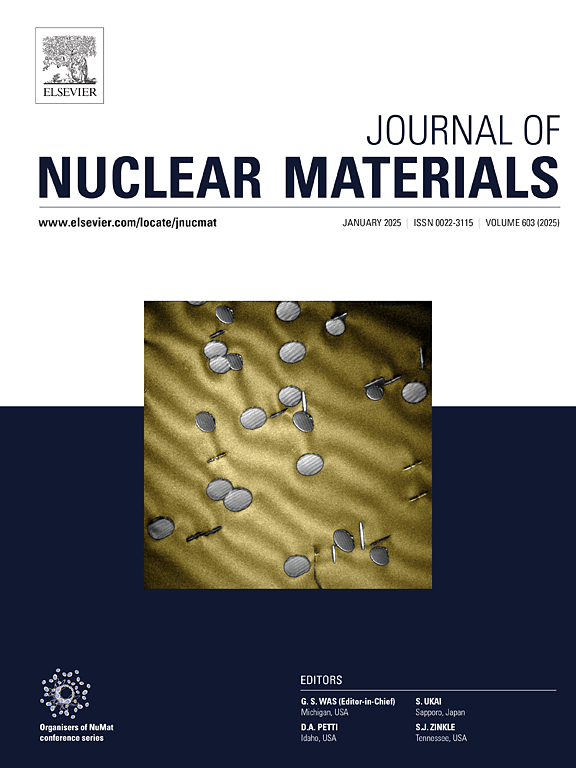Air oxidation kinetics of erbium trihydride and hydrogen permeation mechanism in Er2O3 layer
IF 2.8
2区 工程技术
Q3 MATERIALS SCIENCE, MULTIDISCIPLINARY
引用次数: 0
Abstract
The hydrogen permeation barrier is crucial in minimizing the loss of hydrogen isotopes from structural components, particularly in applications such as hydrogen storage systems and fusion reactors. In this study, Er2O3 layers were synthesized on erbium trihydride (ErH3) powder surfaces through air oxidation. Oxidation kinetics were examined within the temperature range of 100 to 300 °C, and the kinetic parameters were identified, leading to the suggestion of grain boundary diffusion controlling mechanism. Focused ion beam scanning electron microscope (FIB-SEM), X-ray photoelectron spectroscopy (XPS) and X-ray diffraction (XRD) were employed to analyze the cross-sectional microstructure, crystal structure and chemical composition of the pre-oxidized samples. Thermal desorption spectroscopy (TDS) observations suggested that the low-temperature peak was affected by hydrogen diffusion through the Er2O3 layer, whereas the high-temperature desorption peak associated with β-ErH2 decomposition was unaffected due to the dissolution and reduction of oxide layer. A hydrogen permeation model was introduced to calculate the activation energy for hydrogen permeation through the Er2O3 layer formed on ErH3.
求助全文
约1分钟内获得全文
求助全文
来源期刊

Journal of Nuclear Materials
工程技术-材料科学:综合
CiteScore
5.70
自引率
25.80%
发文量
601
审稿时长
63 days
期刊介绍:
The Journal of Nuclear Materials publishes high quality papers in materials research for nuclear applications, primarily fission reactors, fusion reactors, and similar environments including radiation areas of charged particle accelerators. Both original research and critical review papers covering experimental, theoretical, and computational aspects of either fundamental or applied nature are welcome.
The breadth of the field is such that a wide range of processes and properties in the field of materials science and engineering is of interest to the readership, spanning atom-scale processes, microstructures, thermodynamics, mechanical properties, physical properties, and corrosion, for example.
Topics covered by JNM
Fission reactor materials, including fuels, cladding, core structures, pressure vessels, coolant interactions with materials, moderator and control components, fission product behavior.
Materials aspects of the entire fuel cycle.
Materials aspects of the actinides and their compounds.
Performance of nuclear waste materials; materials aspects of the immobilization of wastes.
Fusion reactor materials, including first walls, blankets, insulators and magnets.
Neutron and charged particle radiation effects in materials, including defects, transmutations, microstructures, phase changes and macroscopic properties.
Interaction of plasmas, ion beams, electron beams and electromagnetic radiation with materials relevant to nuclear systems.
 求助内容:
求助内容: 应助结果提醒方式:
应助结果提醒方式:


